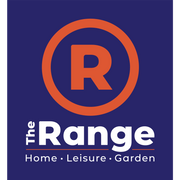Water can be a tricky thing to manage in day-to-day environments. Whether it’s from the rain, regular cleaning, or location near a water source, moisture build-up tends to cause problems. Puddles, algae, and slippery patches don’t just look unsightly, they raise the risk of slips or damage to the surface underneath. If left alone, these issues can slowly disrupt how an area is used, especially in places that ought to stay clear and safe like walkways, decks, and platforms.
That’s where solid water management becomes important. GRP mesh systems offer a smart way to tackle moisture while keeping everything underneath better protected. These systems work hard without needing endless upkeep. They’re light, easy to fit, and keep water flowing through rather than collecting where it shouldn’t. They also offer excellent grip, making surfaces safer when wet. As we get closer to autumn, with wet leaves and rainy days ahead, it’s a good time to think about safer surfaces before things get slippery out there.
What Are GRP Mesh Systems?
GRP stands for Glass Reinforced Plastic, which sounds complicated but really it’s just a strong, lightweight material built to last. It’s made by weaving thin glass fibres and embedding them into a plastic base. The result is a mesh panel that’s solid enough to walk on but built to let water pass through easily. It holds up well in tough conditions and doesn’t rust or rot like some metal or wooden alternatives.
These mesh panels can be installed over existing surfaces or used on raised walkways, around drains, or even on slippery decks. Unlike metal grates or wooden slats, they stay strong without warping, corroding or splitting after constant exposure to rain or sun. It’s a practical upgrade when you’re looking to prevent pooling or soggy spots where water tends to settle.
Not every surface is the same, though, so GRP mesh comes in different shapes, sizes, and thicknesses. Some have finer holes, while others allow for larger debris to pass through. You might see them used on outdoor steps at train stations or covering gutters at commercial sites. What makes them stand out is their mix of traction and drainage. Once in place, they turn slippery surfaces into something more dependable.
Key Benefits Of GRP Mesh Systems For Water Management
When it comes to handling wet and slippery spaces, GRP mesh packs more benefits than people often realise. Here’s what makes it so useful wherever water tends to hang around:
1. Lets water drain away quickly without blocking up
2. Stops puddles from forming and helps reduce algae or moss
3. Adds grip to surfaces so people don’t slip, whether they’re in work boots or trainers
4. Doesn’t rot, rust, or soak up moisture
5. Stays strong in all seasons – hot, cold, wet or dry
Take outdoor decking as a good example. Decking tends to be a spot that looks great in dry weather but turns dangerous when wet. Adding GRP mesh panels or decking anti-slip strips gives those boards a chance to breathe, drain, and stay safe underfoot. You don’t need to keep mopping up to prevent falls, and over time, it means less expensive damage to the wood itself. Think of it as giving your surfaces a pair of waterproof shoes that grip well and last longer.
GRP mesh also suits places with constant cleaning, like wash bays or public entryways. The mesh helps direct water out of the way while keeping the floor area walkable. Because it’s resistant to chemicals, cleaning agents won’t break it down either. That makes it a low-hassle fix for places that take a lot of wear and tear.
Applications Of GRP Mesh Systems In Different Settings
One of the biggest advantages of GRP mesh systems is how flexible they are. You can fit them into almost any type of space, whether it’s a busy industrial corner or a quiet residential garden. It doesn’t matter if the area is getting drenched daily or occasionally splashed, GRP mesh still does the job by keeping the surface underneath dry and creating solid grip where it’s most needed.
You’ll often see it used in places like factories, commercial loading areas, and walkways where water has nowhere to go. Because the mesh surface allows fluids to pass straight through, it’s a useful fix for slips caused by leftover cleaning water or wet weather. It’s also helpful around drainage systems where water flow must stay uninterrupted, even with foot traffic passing over it.
In public settings like parks, pedestrian crossings, or ramps outside shops, it boosts confidence by cutting down on sliding risks. Schools and care facilities also see the benefit, where outdoor paths or entrances support steady foot traffic all year round without leaving people to deal with puddles.
At home, GRP mesh fits well on patios, garden paths, or over timber decking. Particularly in shaded or damp areas where wooden boards stay wet longer, GRP mesh helps surfaces dry out faster and reduces the chance of people losing their footing. For example, a homeowner who has a shaded back garden installed mesh over a slippery rear deck. Now, even when it rains, the kids can go out without anyone landing flat.
How To Choose And Install GRP Mesh Systems
Choosing the right GRP mesh system comes down to how the space is used, who’s using it, and how often water gathers. Look at the flow of foot traffic, exposure to sunlight, surrounding structures, and what kind of footwear people will typically wear in the area. A mesh suited to a muddy hiking path might not work for a wheelchair ramp at a care home entrance.
Here are a few things to consider that make choosing a little easier:
1. Go for finer mesh sizes in residential or mobility-related areas for smoother, safer steps
2. Use heavier-grade mesh in industrial zones or places with equipment or trolleys
3. Thicker profiles give added strength for raised platforms, while thinner ones work well for layering over existing flat surfaces
4. Lighter colours can make areas more visible in poor lighting – helpful in public spaces
Once you’ve selected the right type of GRP mesh, fitting it properly is key. The panels can usually be cut to fit with standard tools, though corners and edges need smooth finishes to avoid trip risks. Fastening the mesh securely keeps it stable even during long-term outdoor use. Gaps should be avoided, and aligning with surface fall or water flow direction helps with quicker drainage.
This isn’t a job to take lightly. Poor fitting can easily undo the benefits. We recommend professional installation to make sure it’s done once and done right. That way, you avoid uneven surfaces or missed drainage flow, and it’s set up to last over the wet months ahead.
Why Safer Surfaces Start With Smart Water Control
Managing water isn't just about keeping things dry. It's about keeping spaces usable, safe, and easy to walk on without second-guessing every step. GRP mesh gives you options that blend into their surroundings, yet perform when it really matters.
As we shift into wetter seasons, it’s easy for paths, decks, and outdoor platforms to become more hazard-prone. GRP mesh solutions reduce that risk by improving grip, guiding water away, and holding up through regular use. Whether you're managing a workplace or just tidying up things at home, thoughtful fixes like these can make all the difference.
It’s not just about one season either. From spring showers to autumn leaves, GRP mesh stays useful all year. Less maintenance, more peace of mind. With the right type installed the right way, safer surfaces don't have to mean complicated changes. They just mean smarter ones.
Enhance safety and protect your outdoor spaces with solutions that work all year round. If you're looking for an easy way to keep your deck secure and reduce slip risks, high-quality decking anti-slip strips are a great choice. At Slips Away, we help you make slippery areas safer without the hassle.














